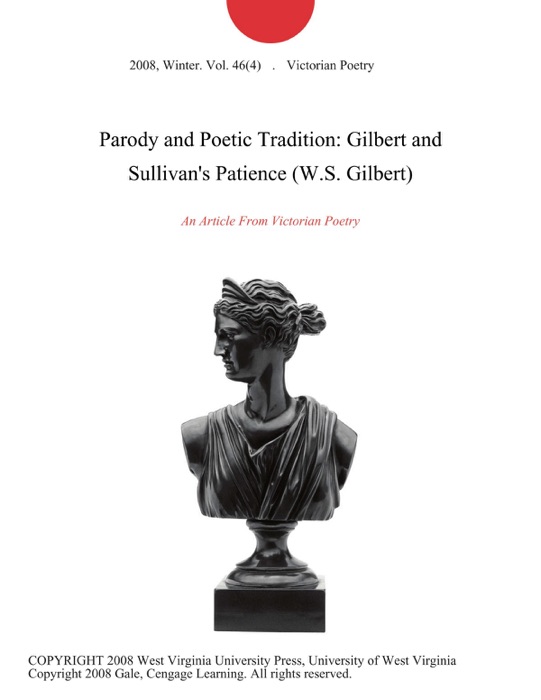[Download] "Parody and Poetic Tradition: Gilbert and Sullivan's Patience (W.S. Gilbert)" by Victorian Poetry " eBook PDF Kindle ePub Free

eBook details
- Title: Parody and Poetic Tradition: Gilbert and Sullivan's Patience (W.S. Gilbert)
- Author : Victorian Poetry
- Release Date : January 22, 2008
- Genre: Language Arts & Disciplines,Books,Professional & Technical,Education,
- Pages : * pages
- Size : 246 KB
Description
Parodies of aestheticism were common fare by the time Patience was produced in 1881. Even so, Patience was recognized as "the most subtle and incisive of all the contributions to the exhaustive satire of aestheticism." It is "deeper than the rest," said the astute reviewer for the Illustrated London News, because it performs "a travesty not only on the mere decorative craze, but upon the form of literature that is supposed to be held in high esteem by the ardent lovers of the beautiful in art" (italics mine). (1) As this contemporary assessment shows, reference to "the decorative craze" was one contemporary default parameter for characterizing aestheticism. In our own day, instead, it is most common to associate aestheticism with a fin-de-siecle loosening of Victorian norms of gender and sexuality. Between then and now, however, the point articulated by the reviewer for the Illustrated London News has been overlooked, while W. S. Gilbert's deep engagement with nineteenth-century poetry and poetics has been relatively unacknowledged. (2) Patience launched a complex genre parody, directed against Victorian poetry in general. The parody is developed through the rivalry between Reginald Bunthorne, an "aesthetic poet," and Archibald Grosvenor, an "idyllic poet." Thus dividing Victorian poetry into two camps and making fun of both, the libretto manages, by implication, to comment on a long nineteenth-century history of Romantic and Victorian poetry, and it shows Gilbert to have been exceptionally well-informed about poetic controversy in the decades before Patience. The fact that this aspect of Patience has not been explored is all the more surprising, since it bears directly upon the opera's concern with changing gender norms, as well as its analysis of class.